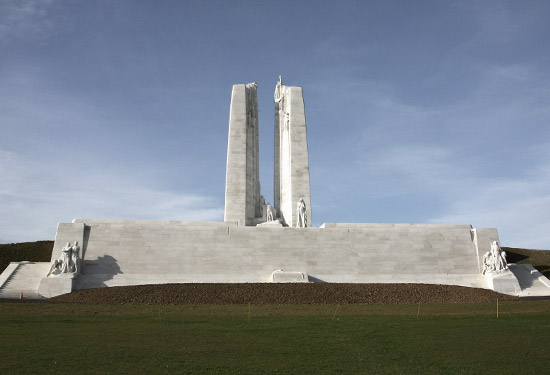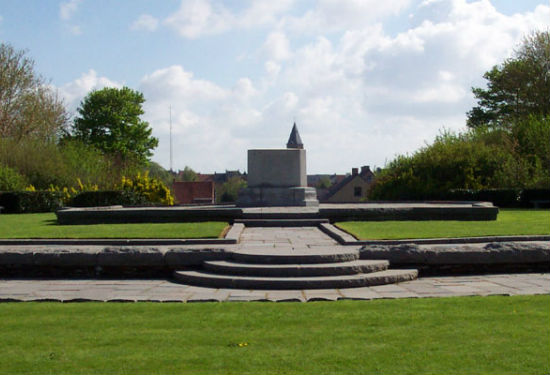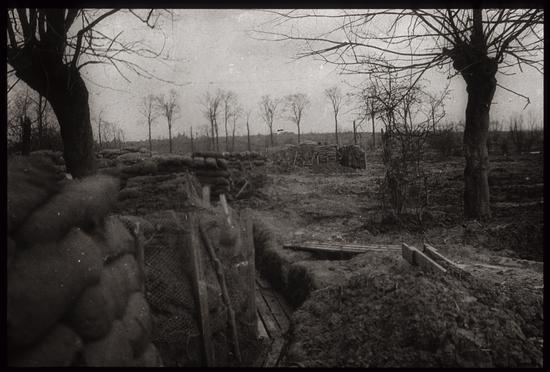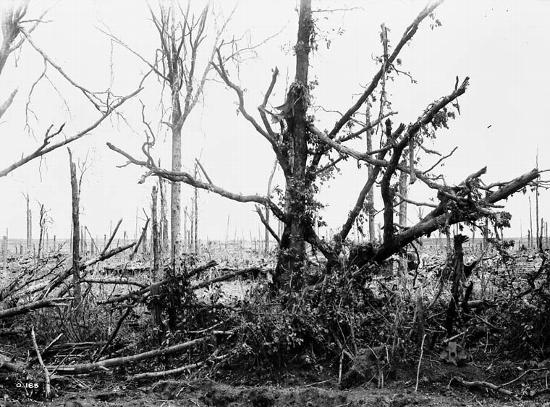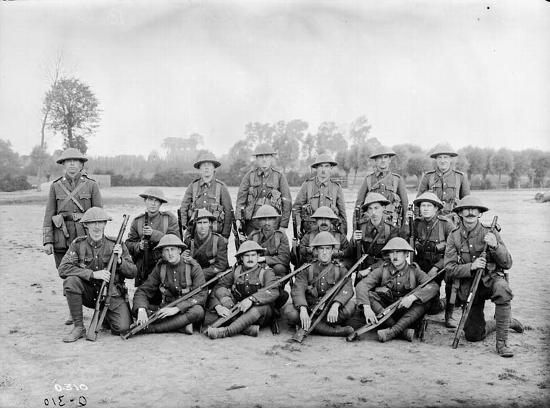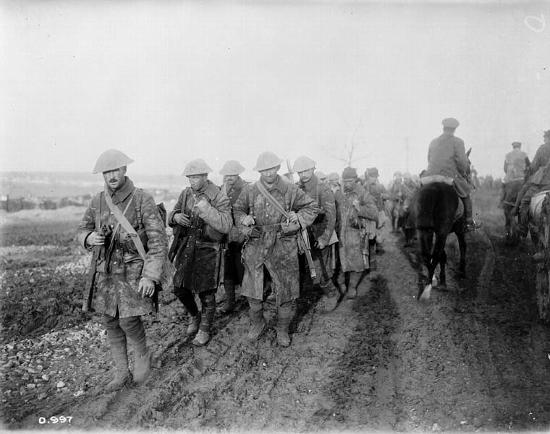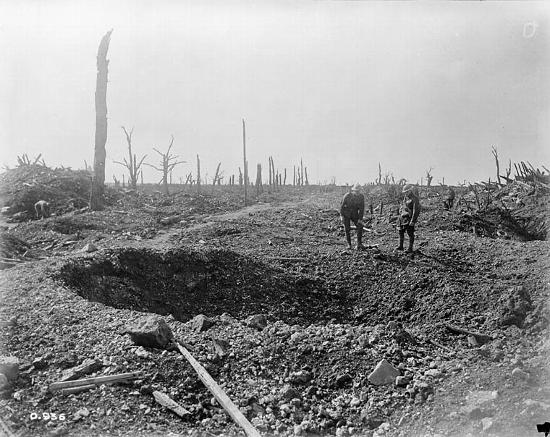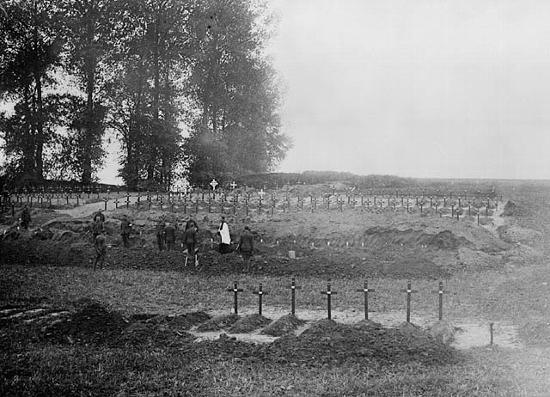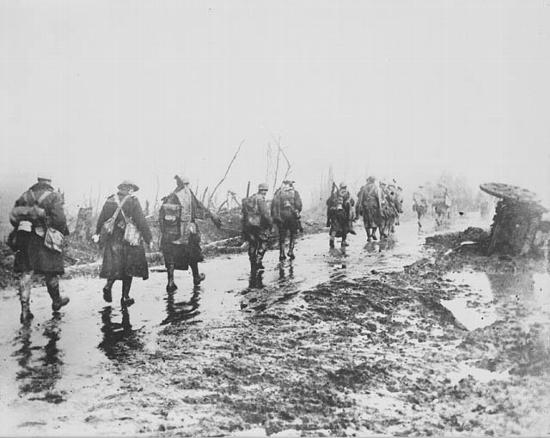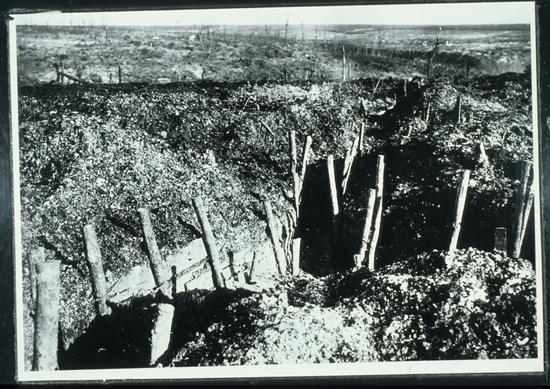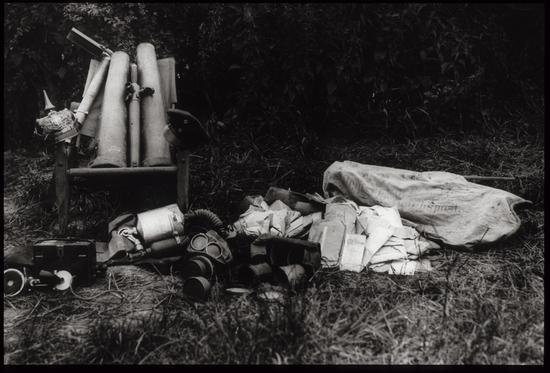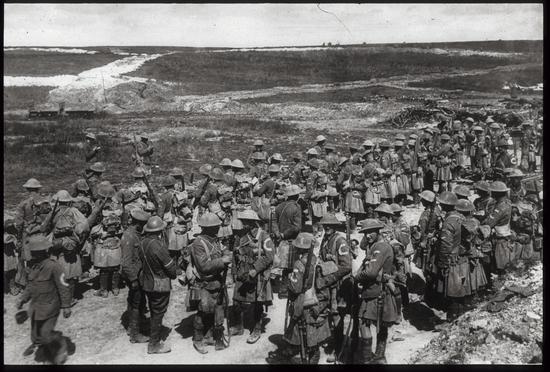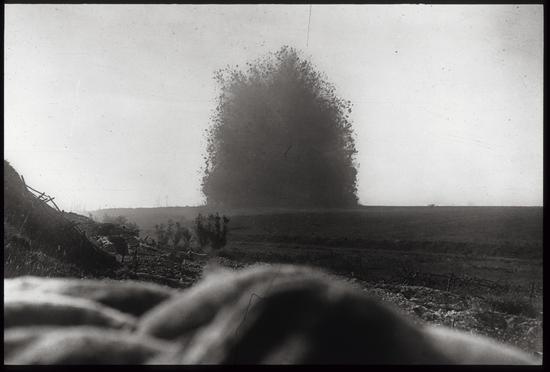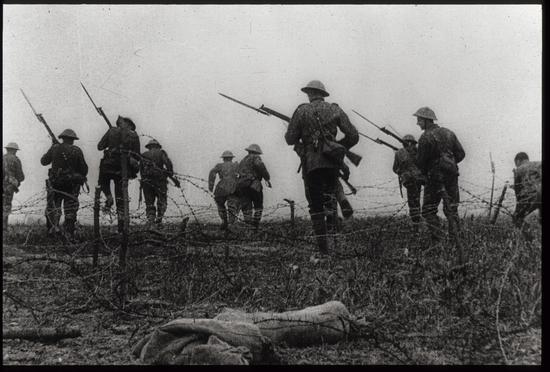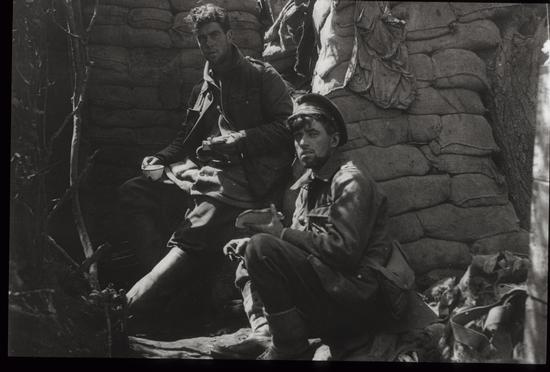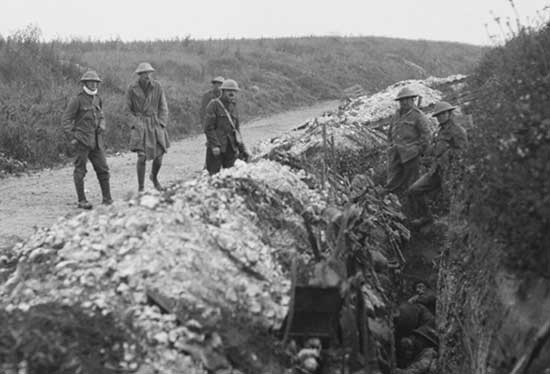
Battle of the Somme
Canadians faced months of hard fighting at the Somme in the late summer and fall of 1916.
July 1 – 18 November 1916
First World War
Table of contents
Section 1
Classroom materials
Introduction
The First World War was fought from 1914 to 1918 and was the most destructive conflict that had ever been seen up to that time. The Battle of the Somme was one of the war's most significant campaigns and Canadian soldiers from coast to coast would see heavy action in the fighting there in the summer and fall of 1916.
The Western Front
After the outbreak of the First World War in August 1914, the combat in Western Europe soon turned into a stalemate of trench fighting along a front line stretching almost 1,000 kilometres across parts of Belgium and France. On one side of this "Western Front" were the forces of France and Britain (along with allies such as Canada) and on the other were the Germans. From their opposing trenches they faced one another across a bleak “No Man's Land” of barbed wire and shell craters.
A new kind of warfare
These strong defensive positions were well-protected by machine guns, snipers, and artillery which made a decisive breakthrough of the enemy lines very difficult. Military leaders struggled with devising effective tactics to deal with the realities of this new kind of warfare. Nevertheless, plans were made to break the deadlock and the British and French marshalled their resources for the “Big Push” that would finally shatter the German defensive lines. This bold offensive was planned for the summer of 1916 in the Somme River valley of northern France.
The opening of the battle
The Battle of the Somme began with a massive attack by hundreds of thousands of British and French troops on the morning of July 1, 1916. It would be a disastrous start for the Allies as their forces were pounded by heavy enemy fire when they climbed out of their trenches and advanced across No Man's Land. Tragically, more than 57,000 British Commonwealth troops would be killed, wounded, taken prisoner or go missing—the highest single day losses in the British Army's long history. This shocking total included more than 700 soldiers of the Newfoundland Regiment (who were not fighting as part of the Canadian Corps as Newfoundland did not become part of Canada until decades later in 1949).
The fight drags on
The Battle of the Somme was not a one-day affair, however, and the offensive would continue for more than four and a half months. While the Allies did have some battlefield successes later in July, a major breakthrough never materialized and the bloody fighting dragged on.
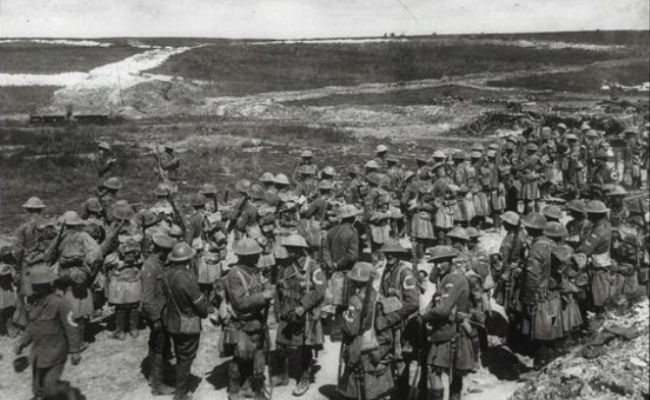
Roll call of the Seaforth Highlanders on the afternoon of the first day of the Battle of the Somme. Photo: Imperial War Museum, Q 746
Canadians on the Somme
For most of the summer of 1916, the Canadian Corps had been manning a section of the Western Front in Belgium. In late August, however, they began to shift to the Somme front near the French village of Courcelette. The Canadians immediately encountered some stiff action there and suffered some 2,600 casualties before the major new offensive they had been tasked with had even gotten underway.
The creeping barrage
On September 15, our soldiers took part in a large-scale attack that was launched at dawn and pushed forward on a 2,000-metre wide front. Making use of a newly developed tactic called the creeping barrage, the Canadians advanced behind a carefully aimed wave of Allied artillery fire that moved ahead on a set schedule. This heavy bombardment forced the enemy defenders to stay under cover for protection and prevented them from cutting down the advancing troops with their rifle and machine gun fire. For this tactic to work, though, the soldiers had to stay perilously close to the heavy shellfire and many were wounded by the Allies' own artillery explosions.
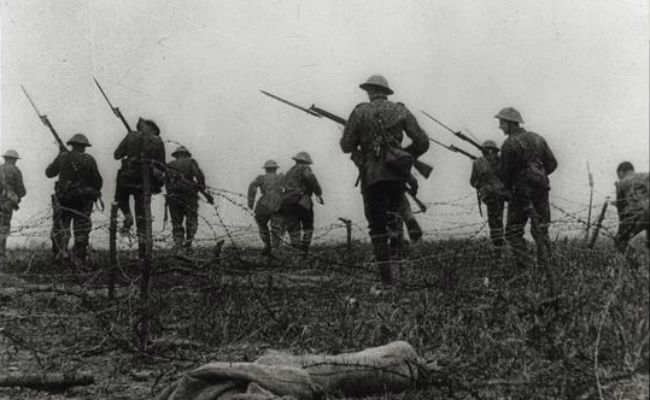
Still from film of Battle of the Somme. Photo: Imperial War Museum Q 70167
Courcelette
The Courcelette battlefield also saw another Allied innovation—the first use of the tank in warfare. They were primitive, few in number and mechanically unreliable, but the tanks' shock value alone was enough to throw the enemy into confusion. The attack went well and by 8:00 a.m., the shattered German defensive position known as the Sugar Factory was taken. The Canadians then pushed ahead to Courcelette itself which was captured later that day. The Germans did not relent, however, and launched numerous counter-attacks which our soldiers repulsed as they consolidated their newly won positions. As was often the pattern during attacks on the Western Front, however, the enemy soon brought up major reinforcements, the defences solidified and any further gains became incredibly hard.
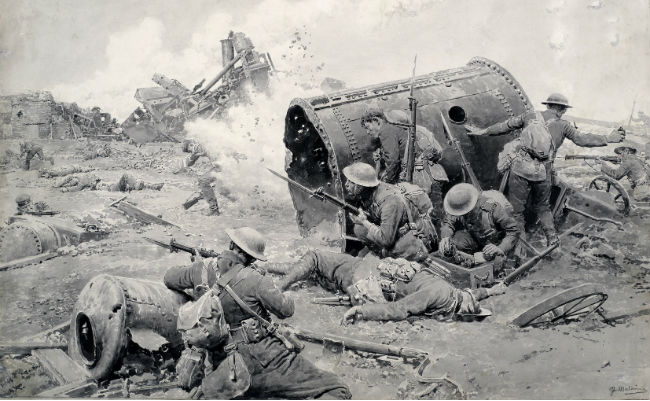
War painting - The Capture of the Sugar Refinery at Courcelette by the Canadians on September 15, 1916 by Fortunino Matania. Image: Canadian War Museum 19870268-001.
Regina Trench
The fighting would not yet come to an end on the Somme, though. In the weeks that followed, soldiers of the 1st, 2nd and 3rd Canadian Divisions would be repeatedly flung against a series of German entrenchments. The final Canadian objective was a defensive line that had been dubbed Regina Trench, but it repeatedly defied capture.
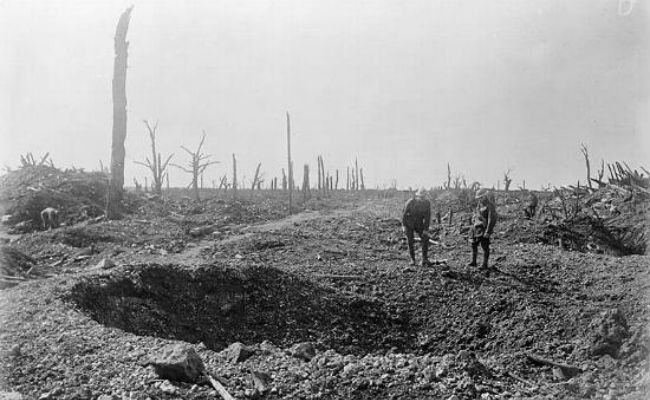
One of the roads to Bapaume. Battles of the Somme. Photo: Canada. Dept. of National Defence / Library and Archives Canada / PA-000884
Big push, small advances
The 4th Canadian Division arrived on the Somme in mid-October to take over from their exhausted fellow Canadians who had been fighting there. They faced a battlefield that had turned to mud and a determined German defence that continued to take a murderous toll on Allied attacks. Despite these great challenges, the Canadians finally captured the shattered remains of Regina Trench on November 11. A week later, in the final attack of the Battle of the Somme, the Canadians took Desire Trench. There were no further advances as the winter weather came and the offensive staggered to a halt. The ‘Big Push' had resulted in the Allied lines being moved forward only some ten kilometres.
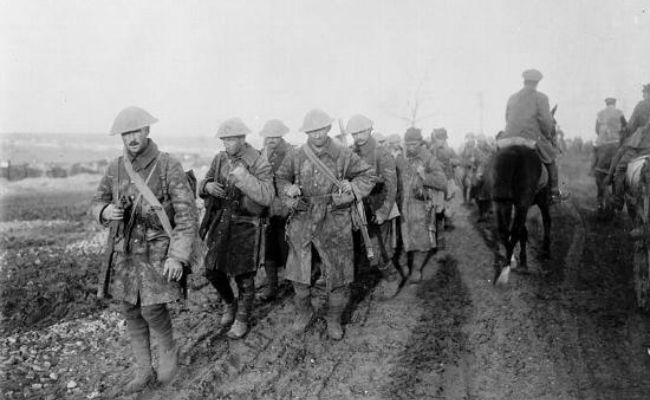
Canadian soldiers returning from trenches during the Battle of the Somme. Photo: Library and Archives Canada / PA-000832
Sacrifice
The scale of the fighting and the shocking toll it took still makes the Battle of the Somme synonymous with the horrors of the First World War for many people. The losses were truly appalling—the Allies suffered more than 650,000 casualties, including some 200,000 who had lost their lives. The Germans, who had also suffered greatly in the fighting, dubbed the Battle of the Somme “das Blutbad” (the blood bath).
Sadly, Canadian losses would contribute to this grim toll. More than 24,000 of our soldiers were killed, wounded or went missing on the Somme. The fallen from this battle were among the more than 66,000 Canadians and Newfoundlanders who lost their lives in the First World War.
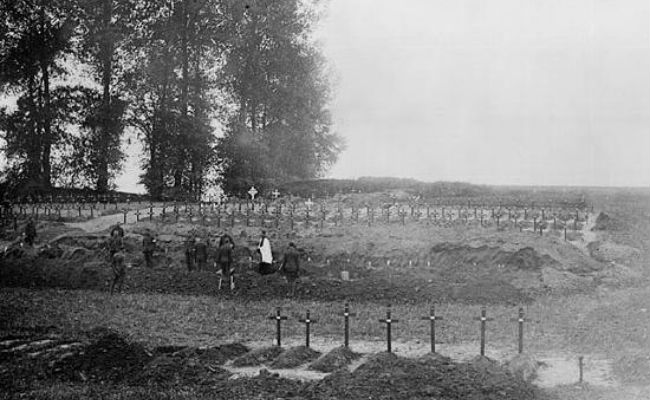
Burial ground of many soldiers who died in the Battle of the Somme in 1916. Photo: William Rider-Rider / Canada. Dept. of National Defence / Library and Archives Canada / PA-002145
Legacy
The Battle of the Somme was in many ways a watershed event in the First World War. The great courage and accomplishments of Canadian soldiers there helped confirm their growing reputation as first-rate front line troops who could capture enemy positions in the face of heavy fire. Indeed, the hard lessons on battlefield tactics that the Canadian Corps learned on the Somme would prove to be very valuable in their future actions.
After the Somme, the Canadians were transferred to the sector of the Western Front near Vimy Ridge. Beginning in the spring of 1917, our soldiers would put together an unbroken string of battlefield successes that culminated in them playing a leading role in the Allied offensives in the last hundred days of the war which would finally end the conflict in November 1918.

- Date modified:





